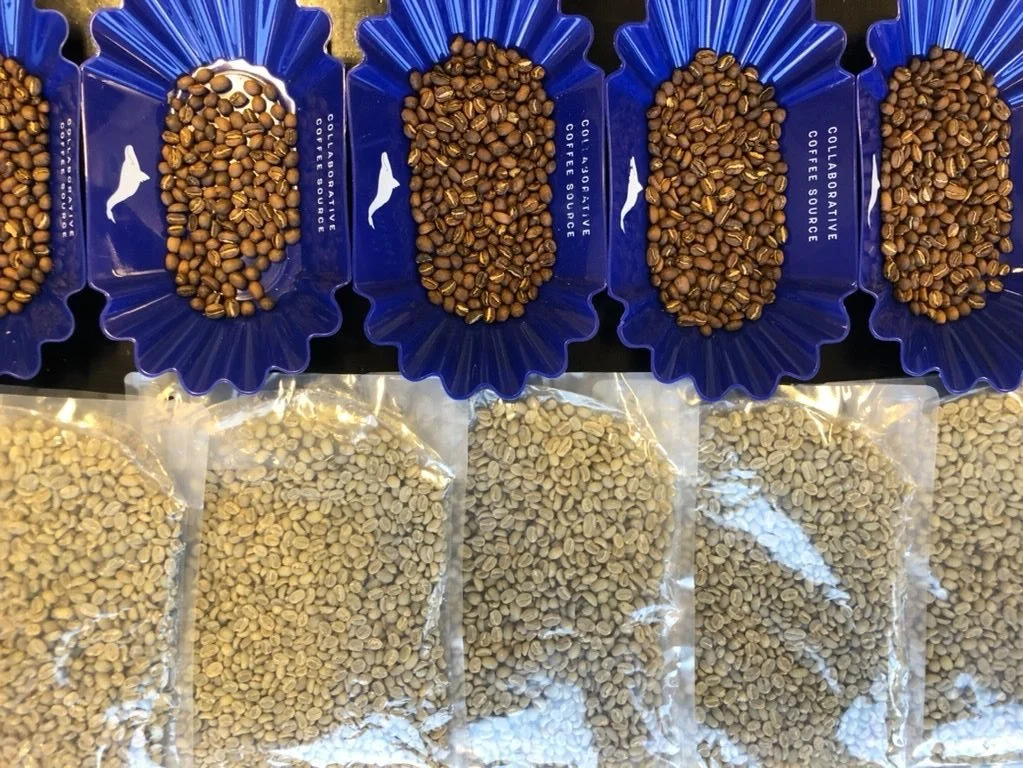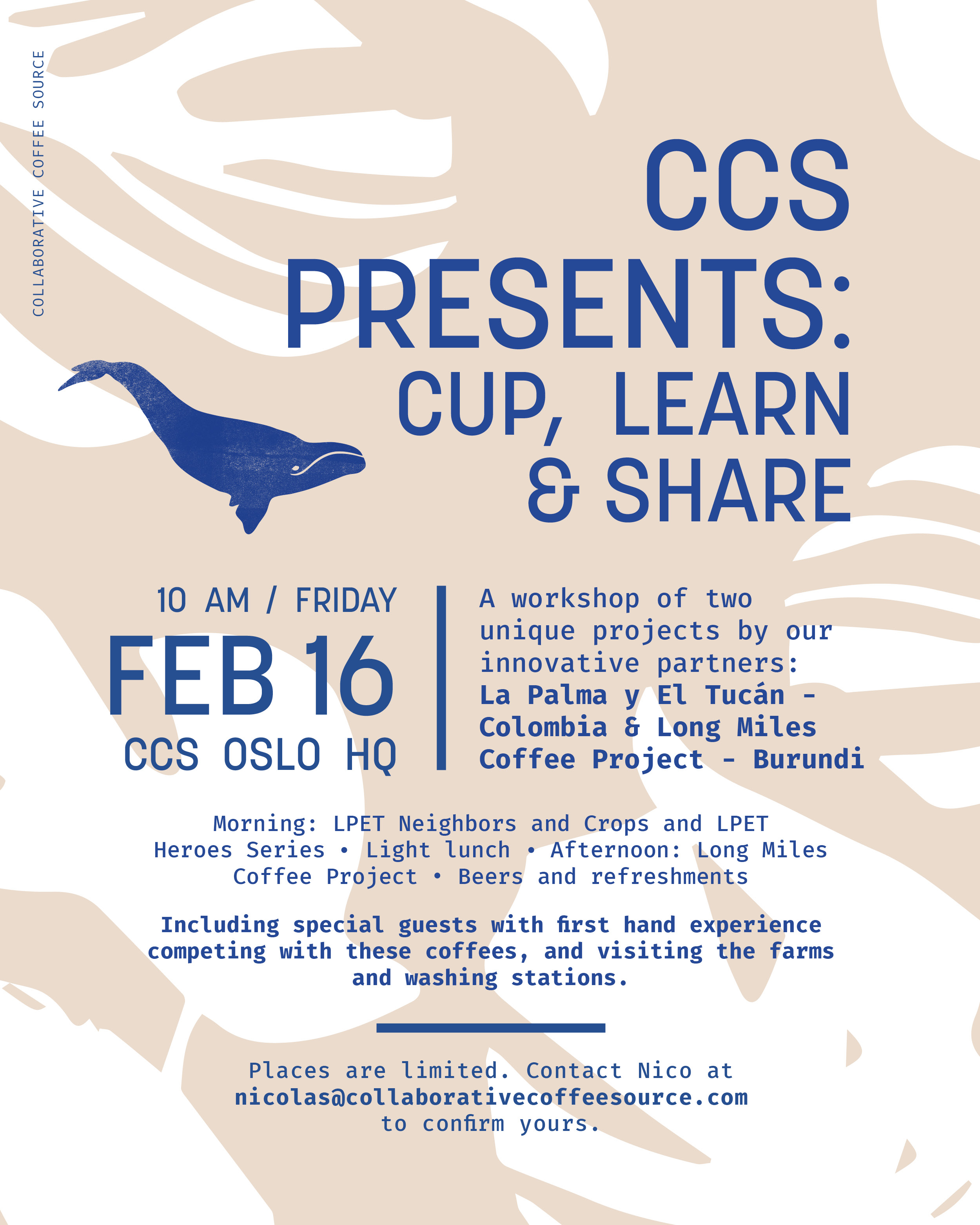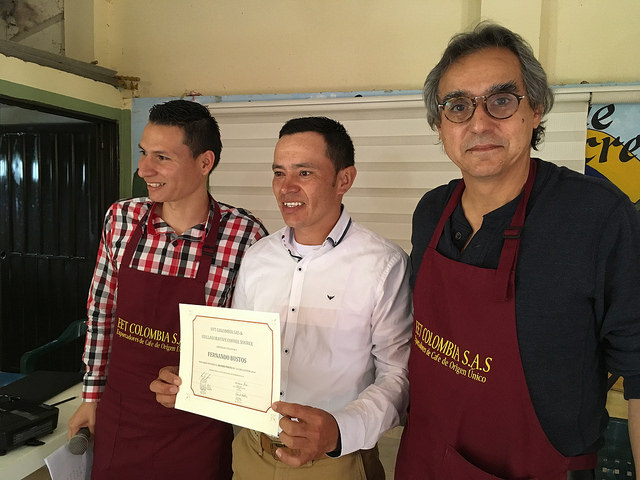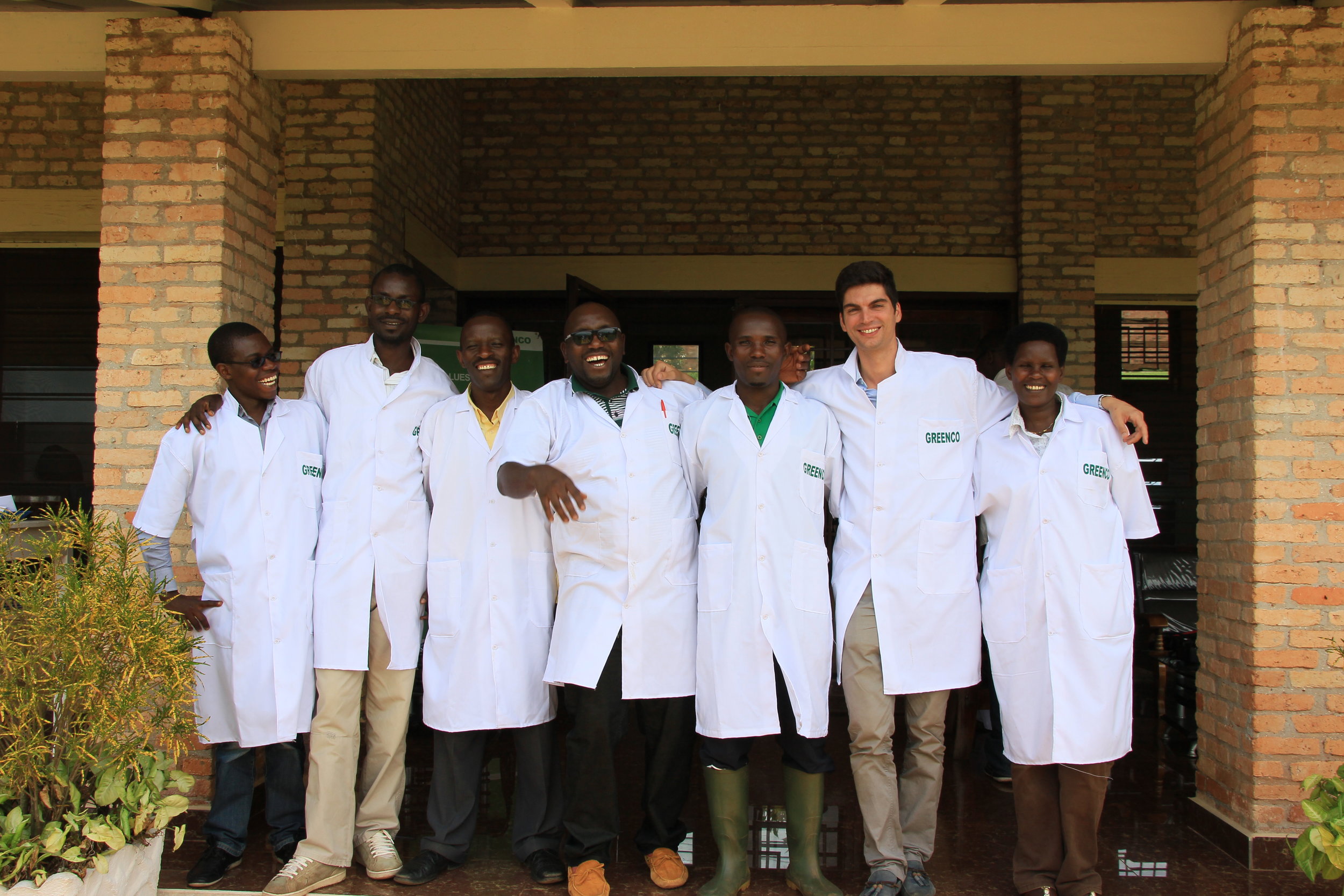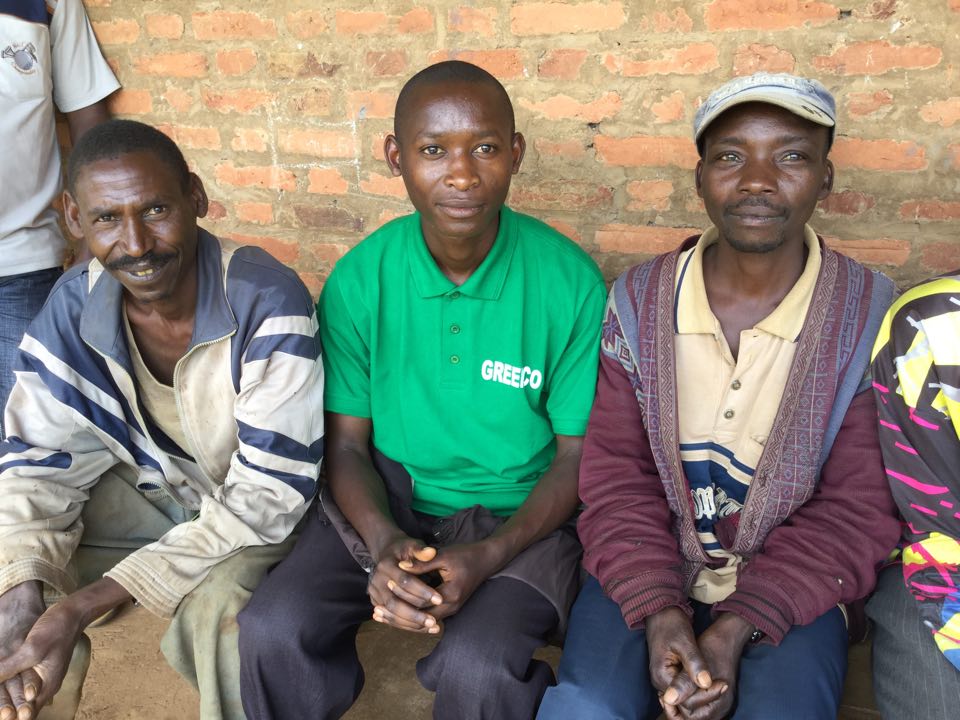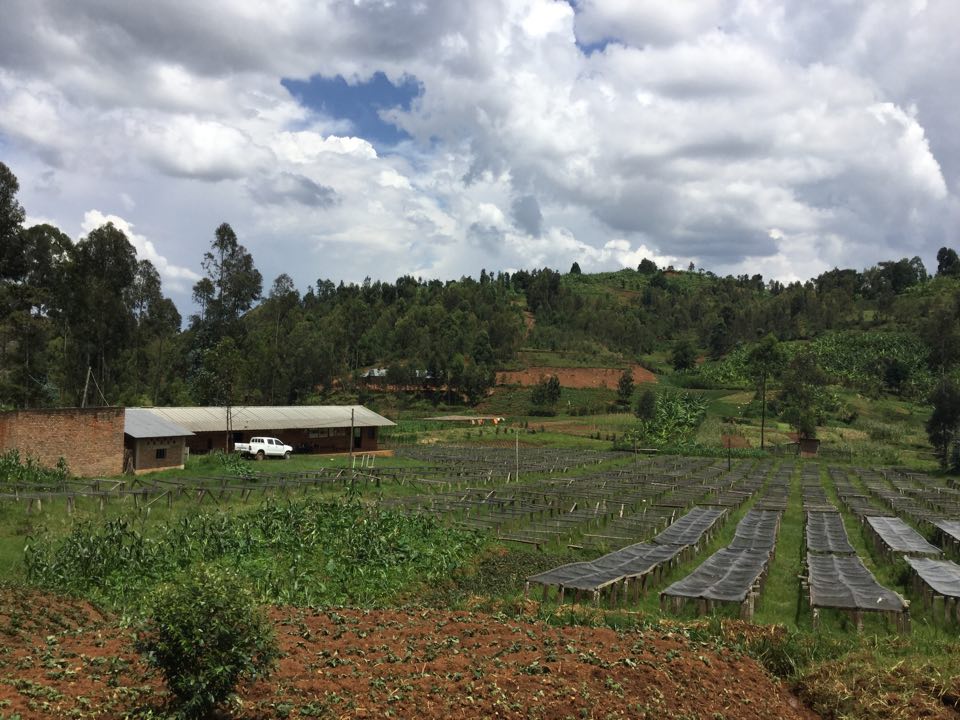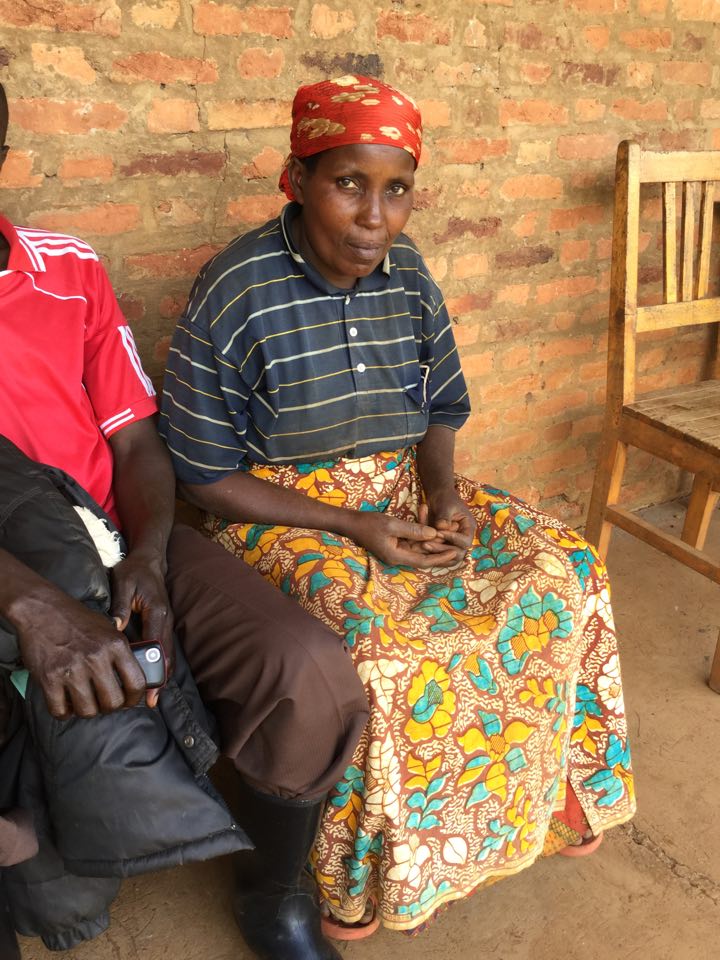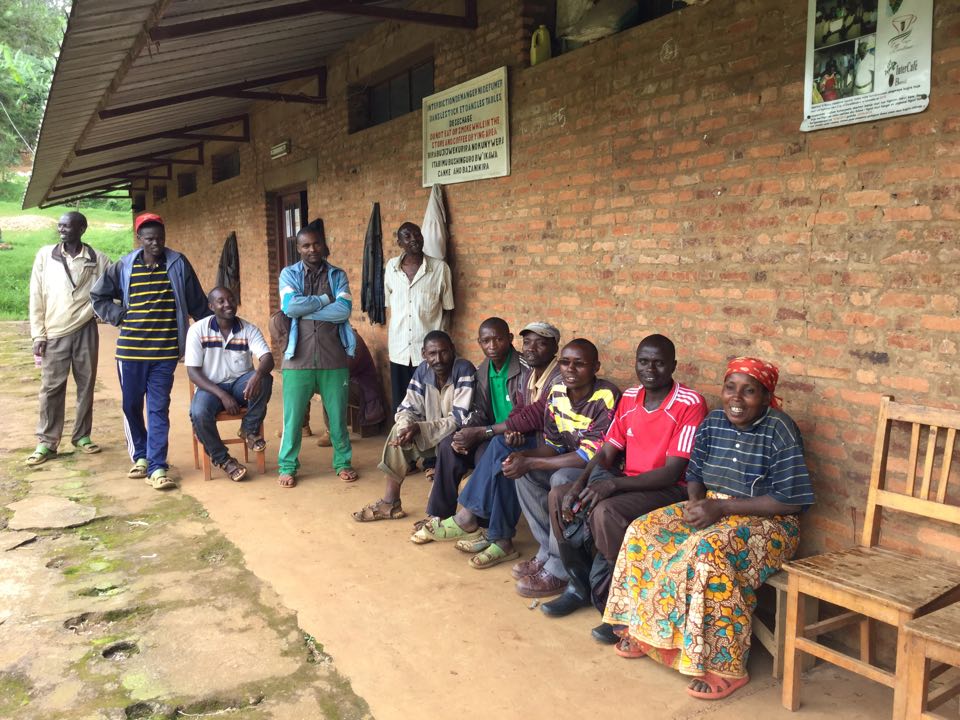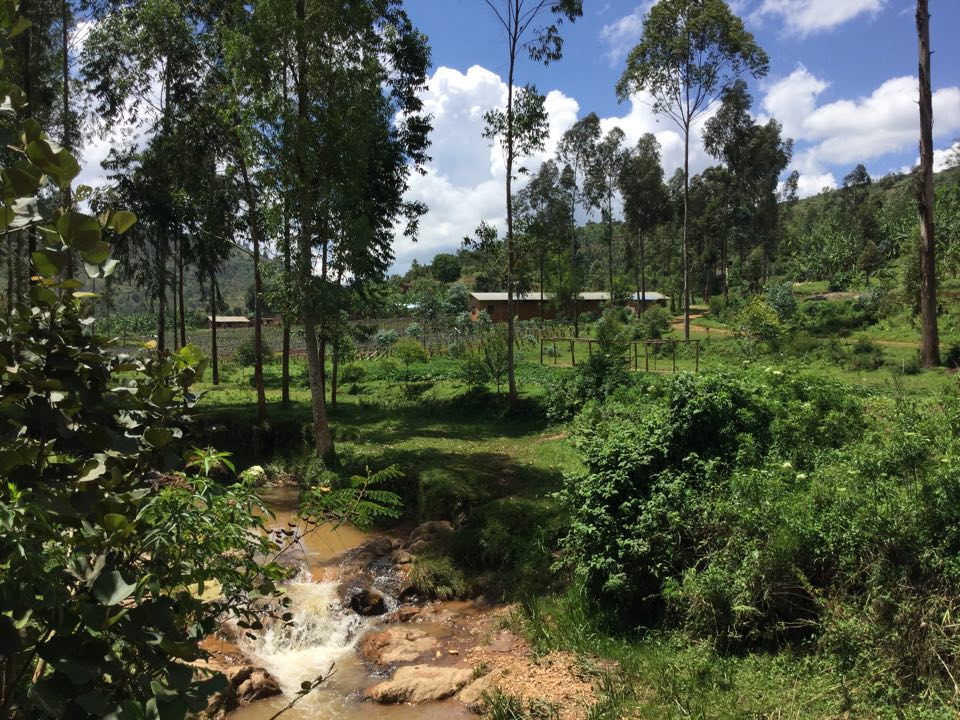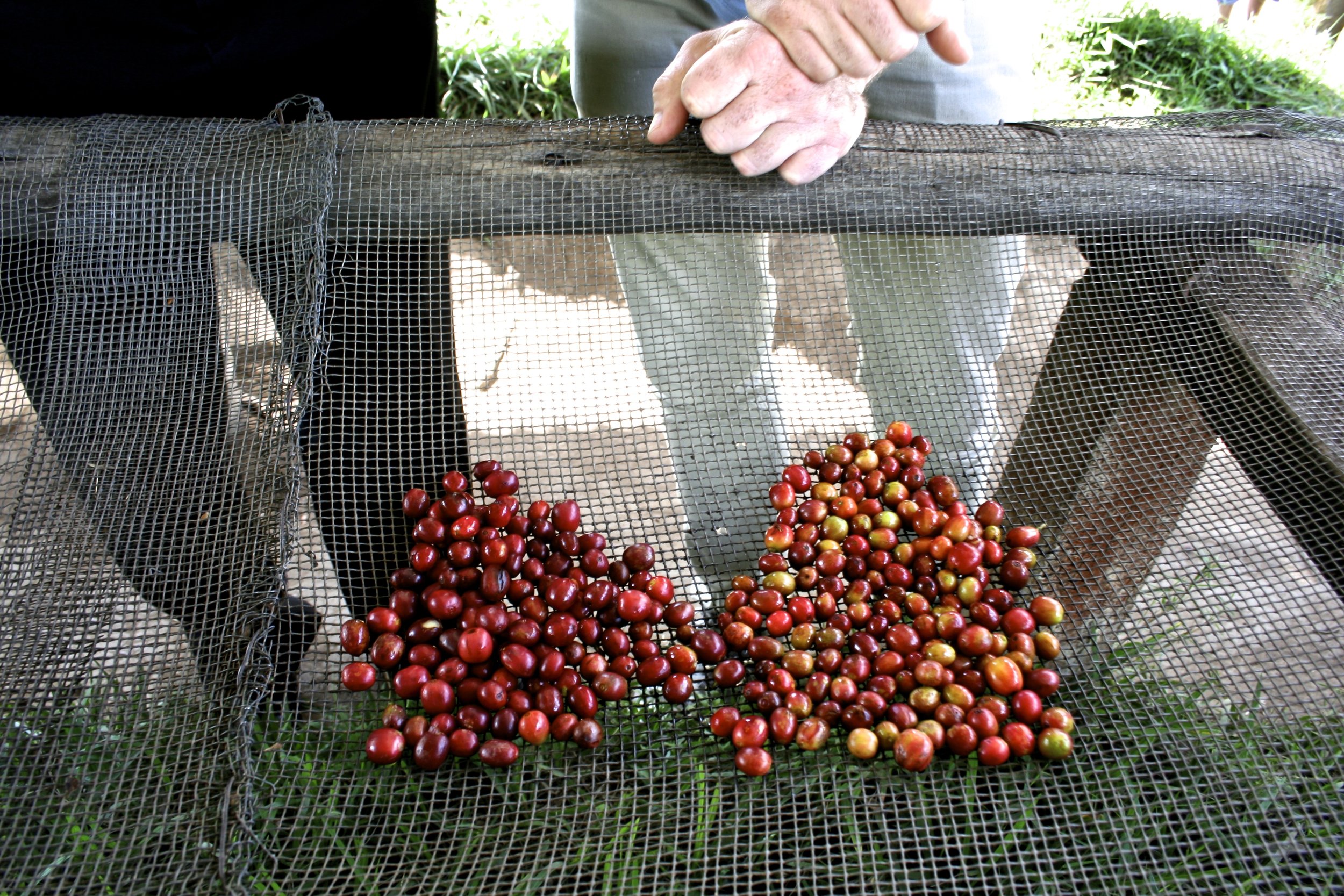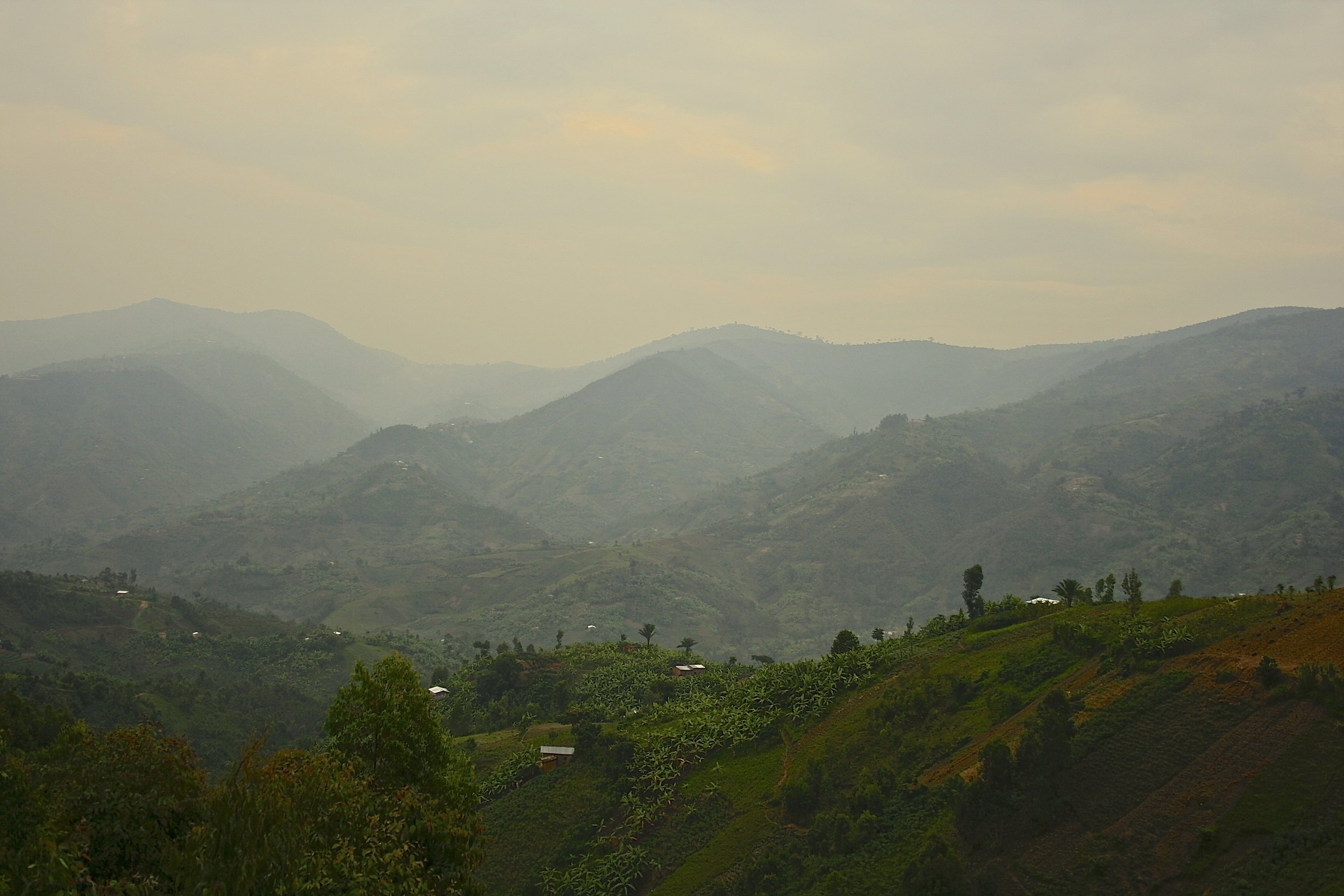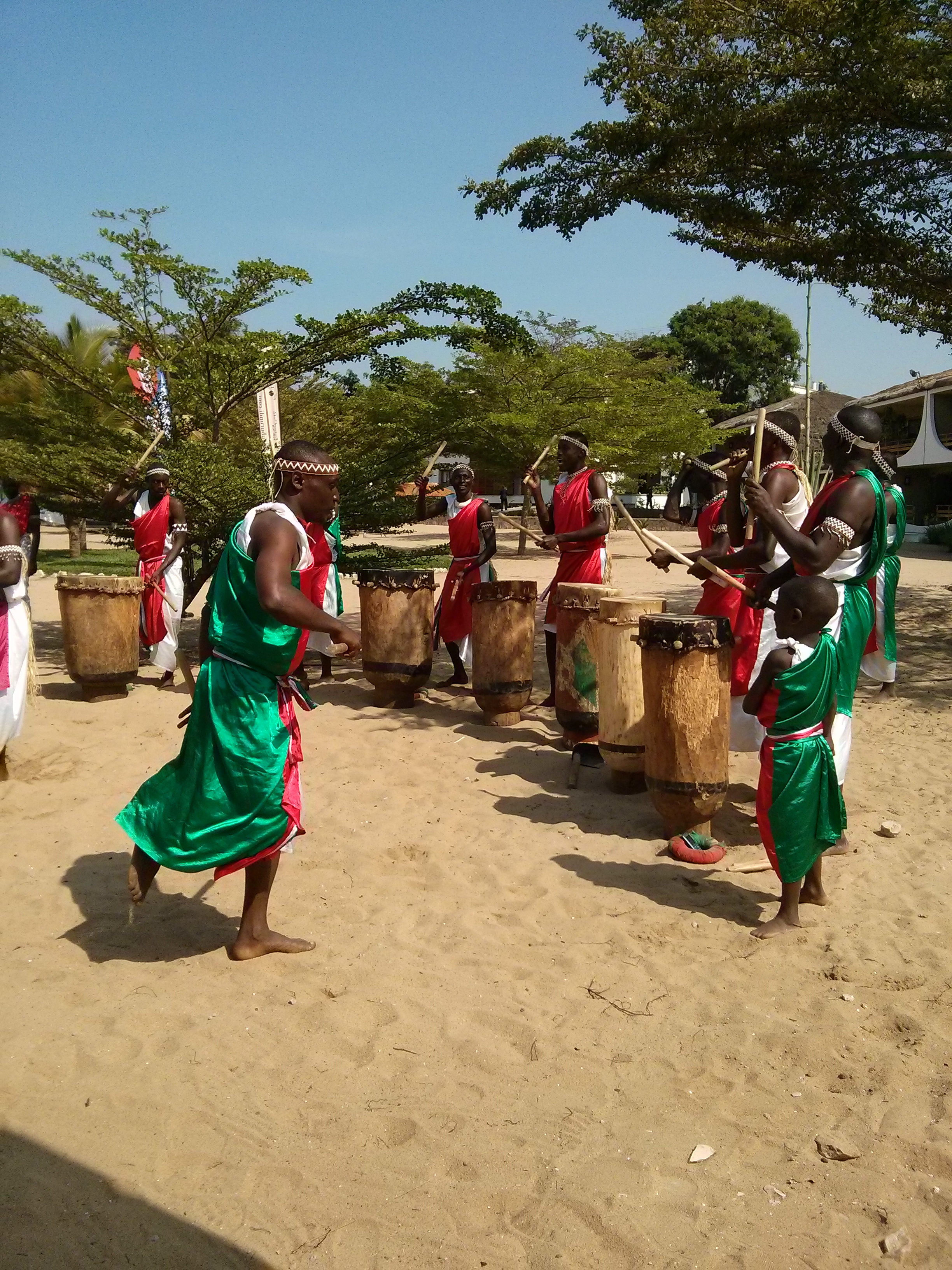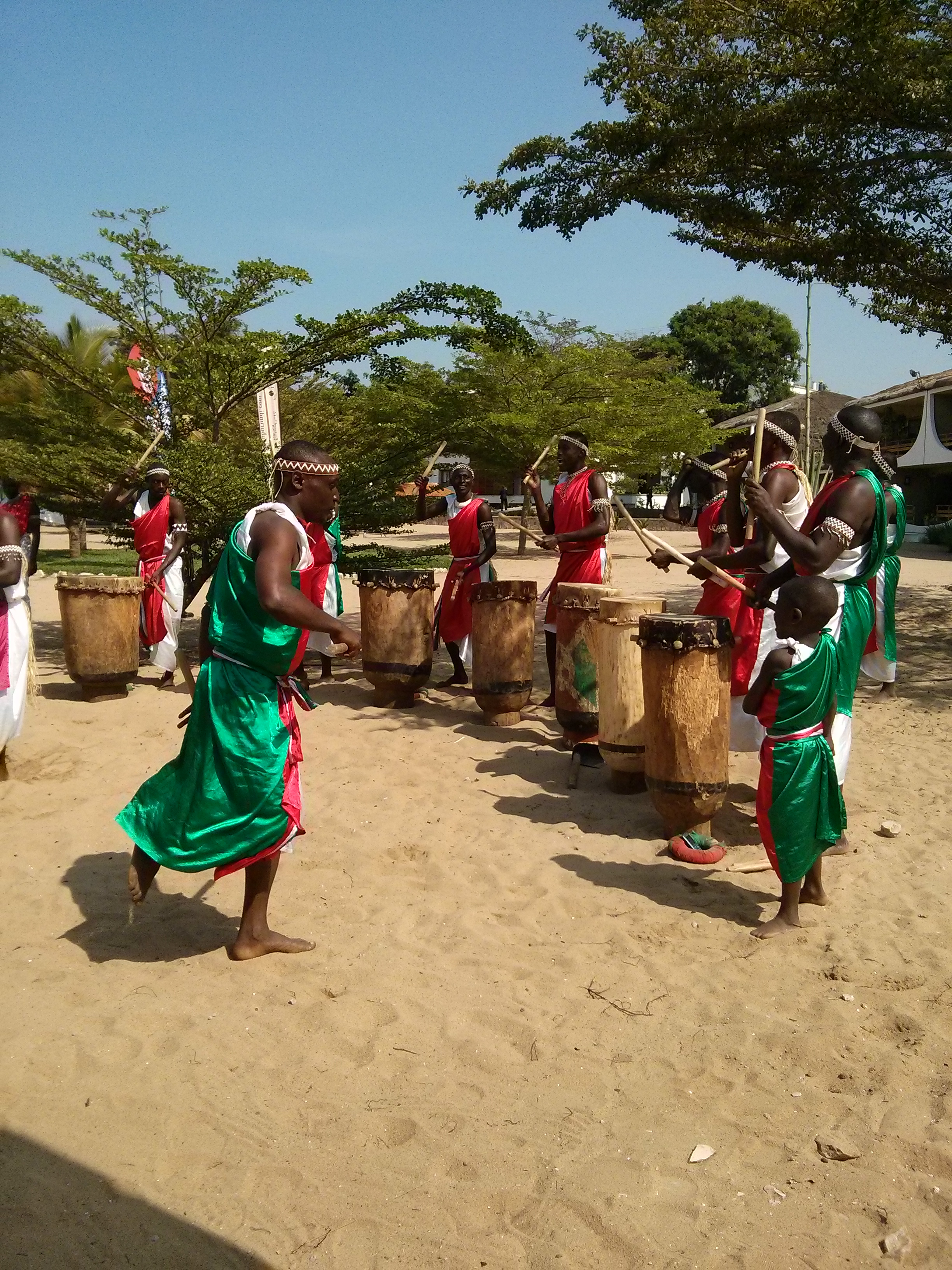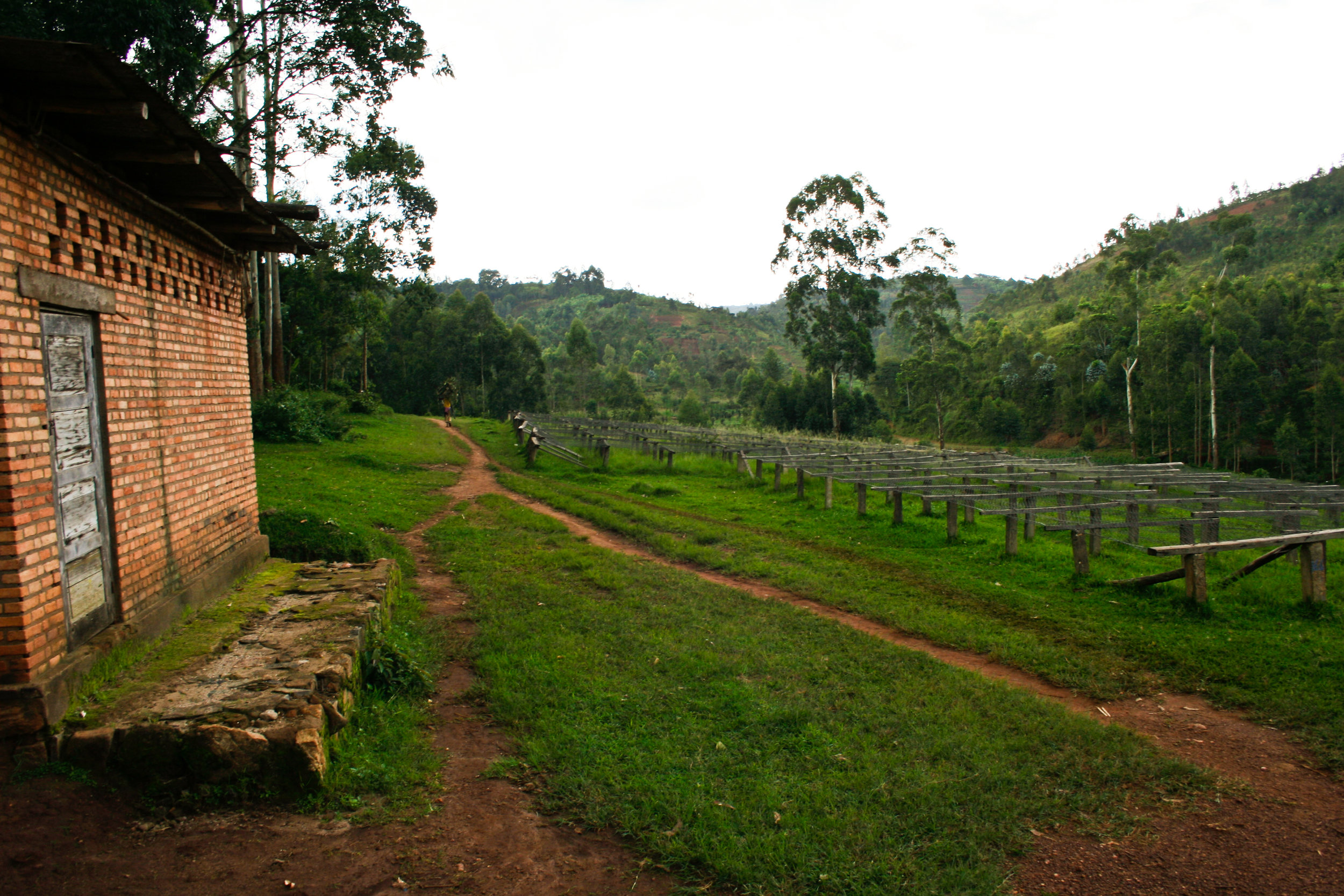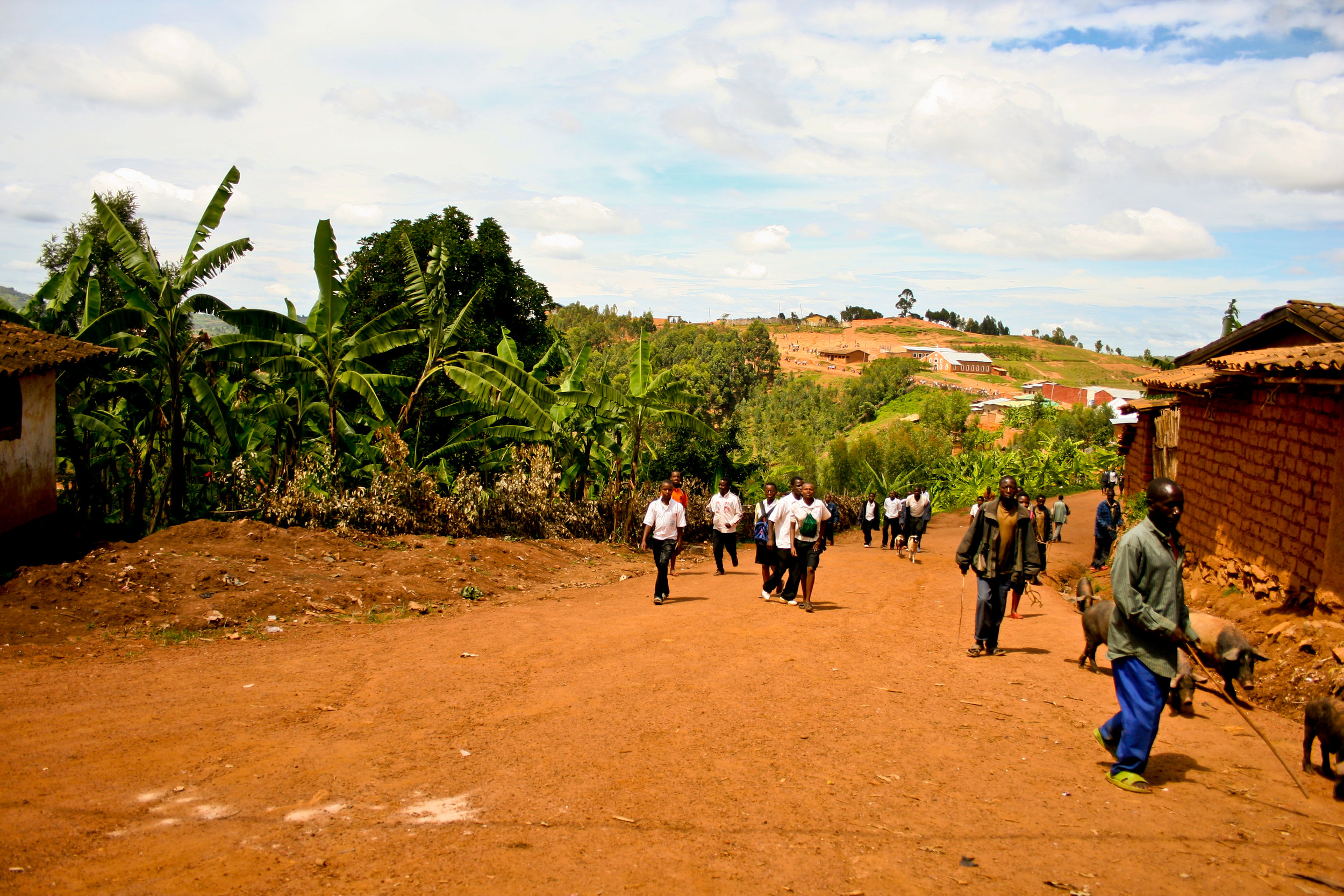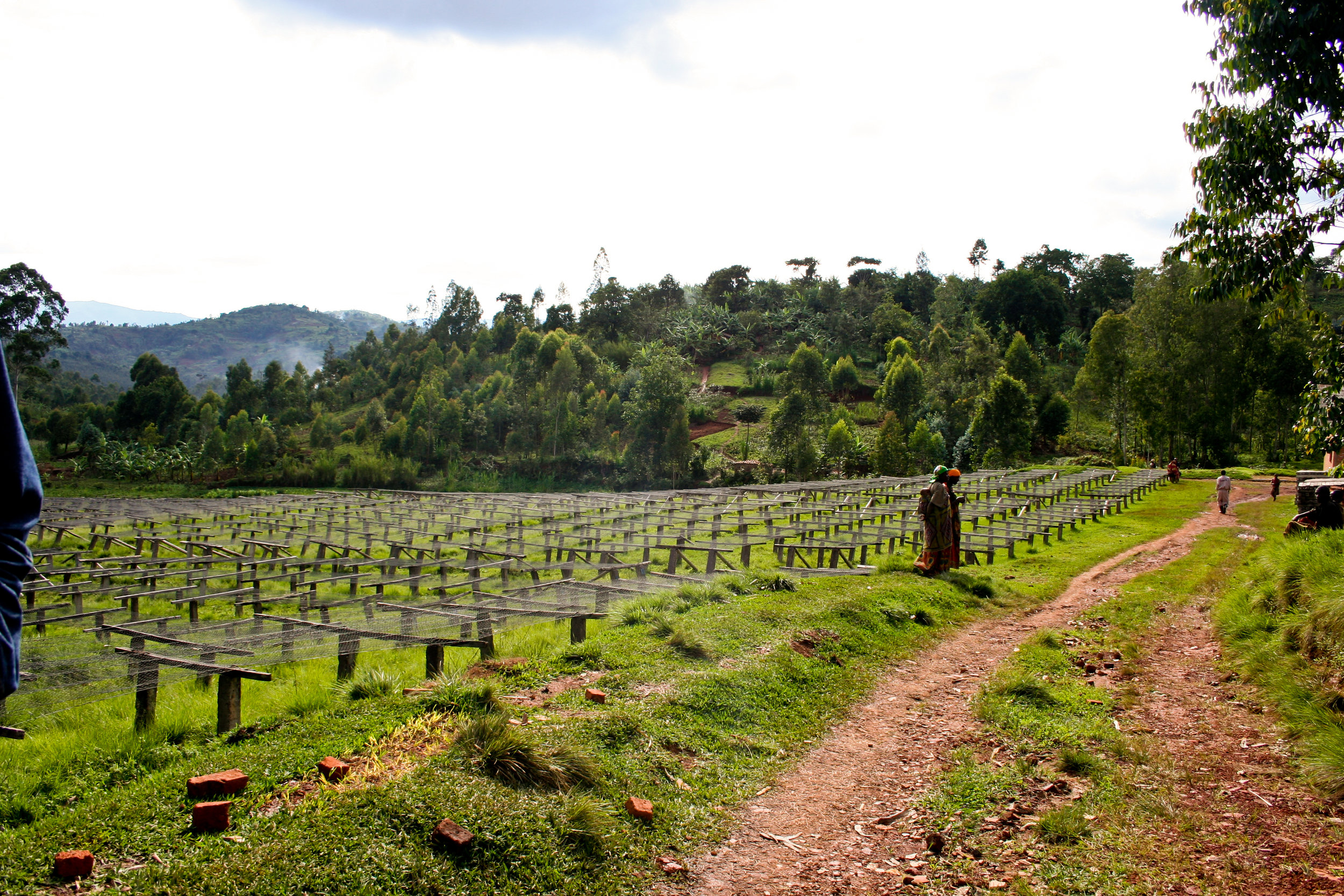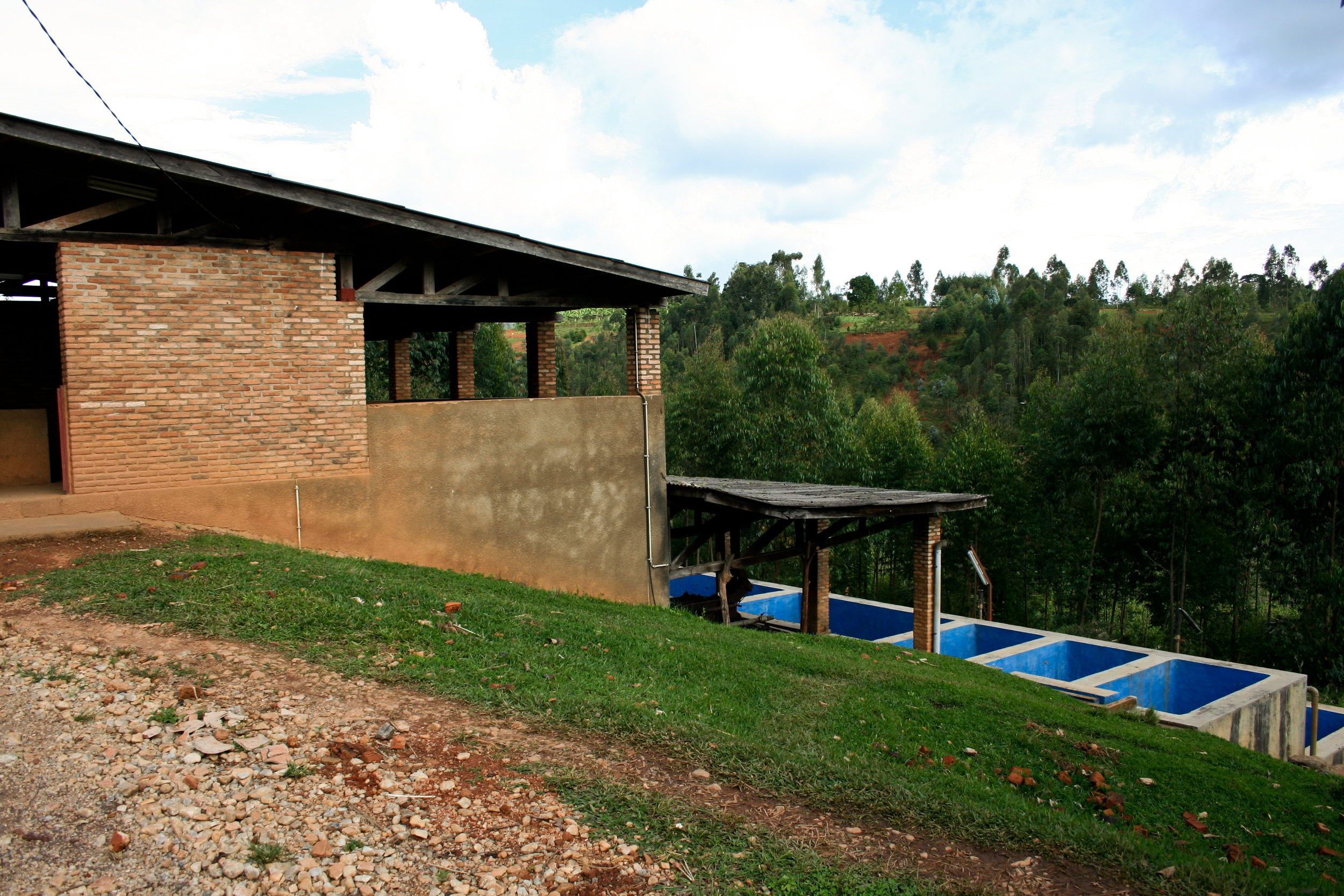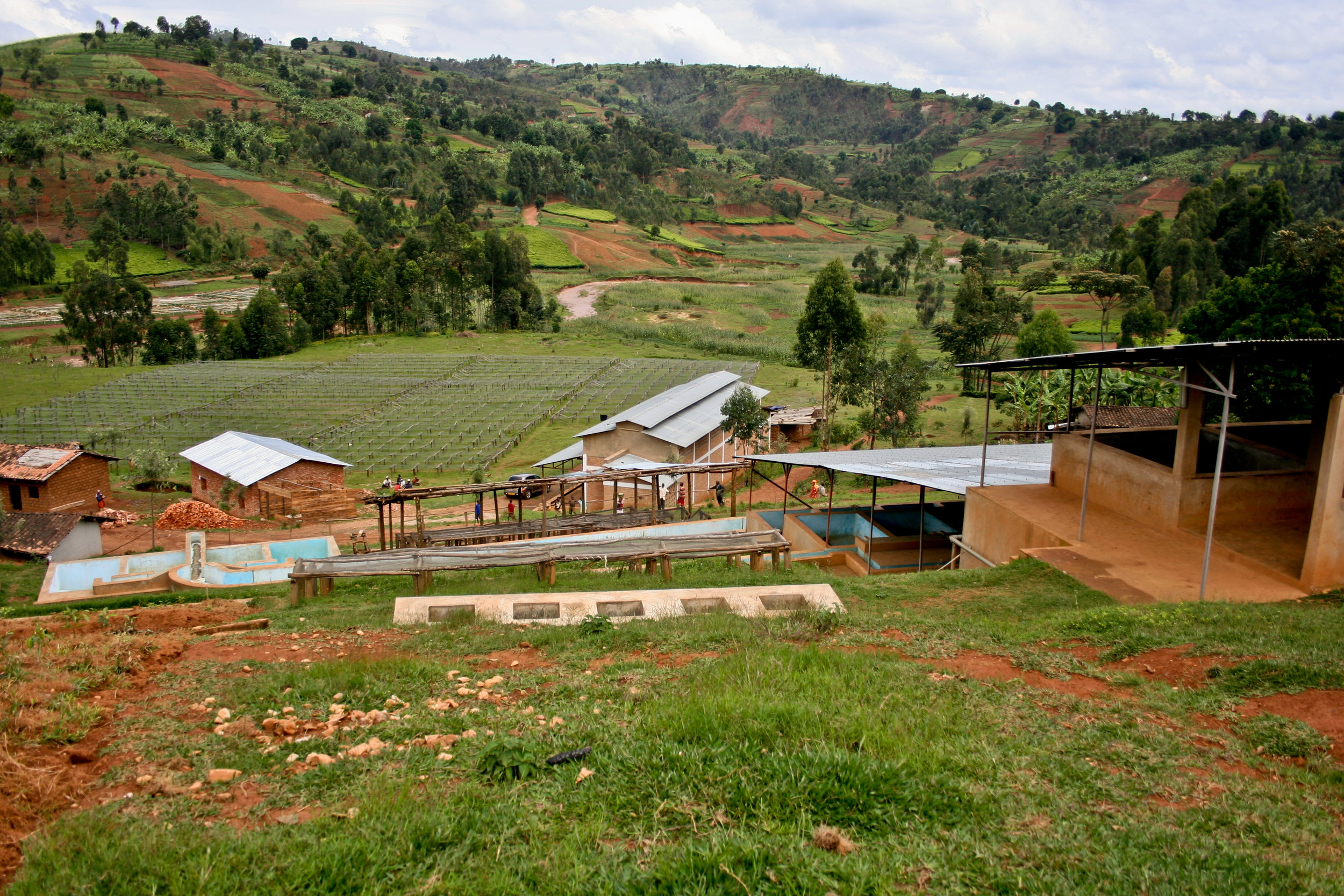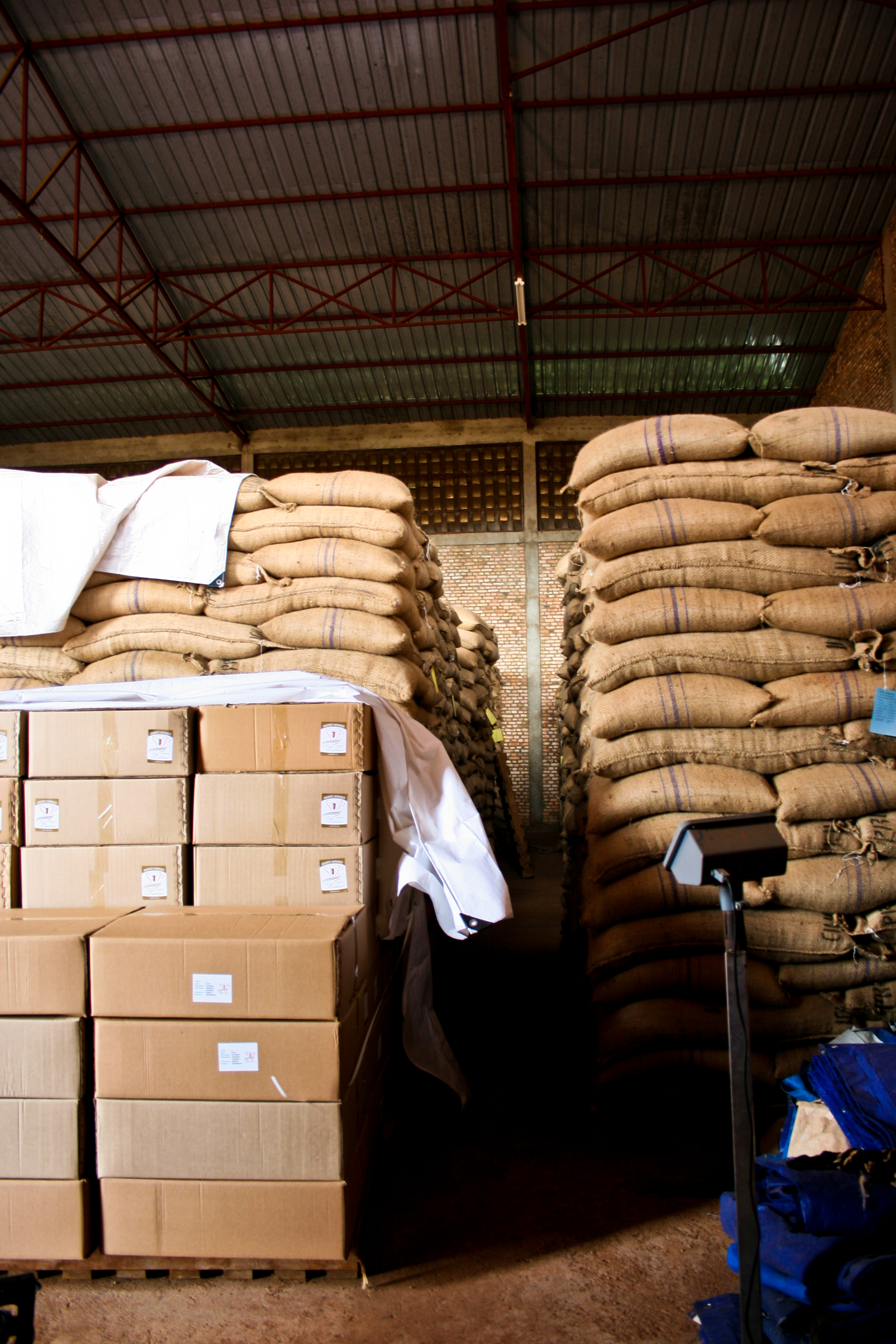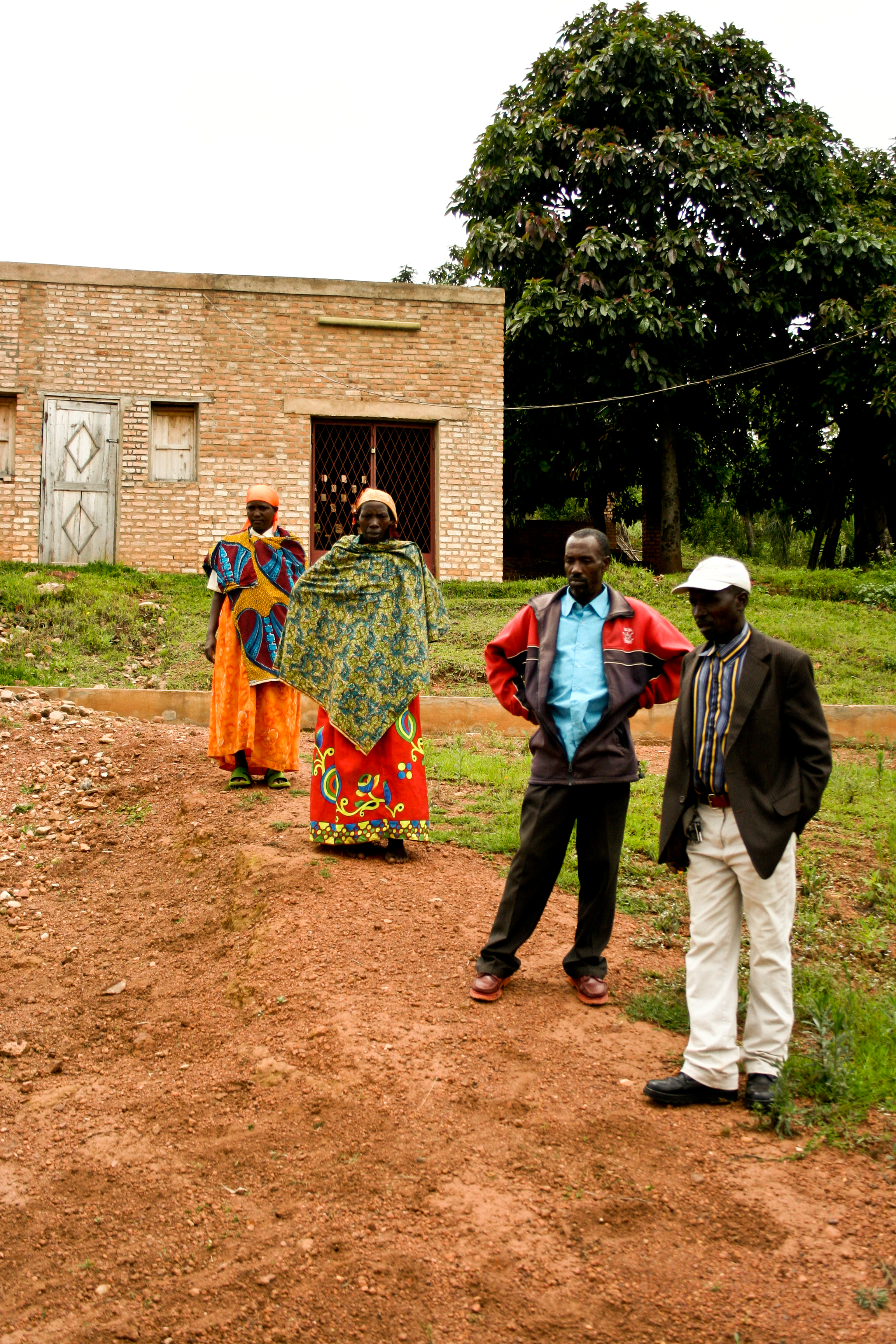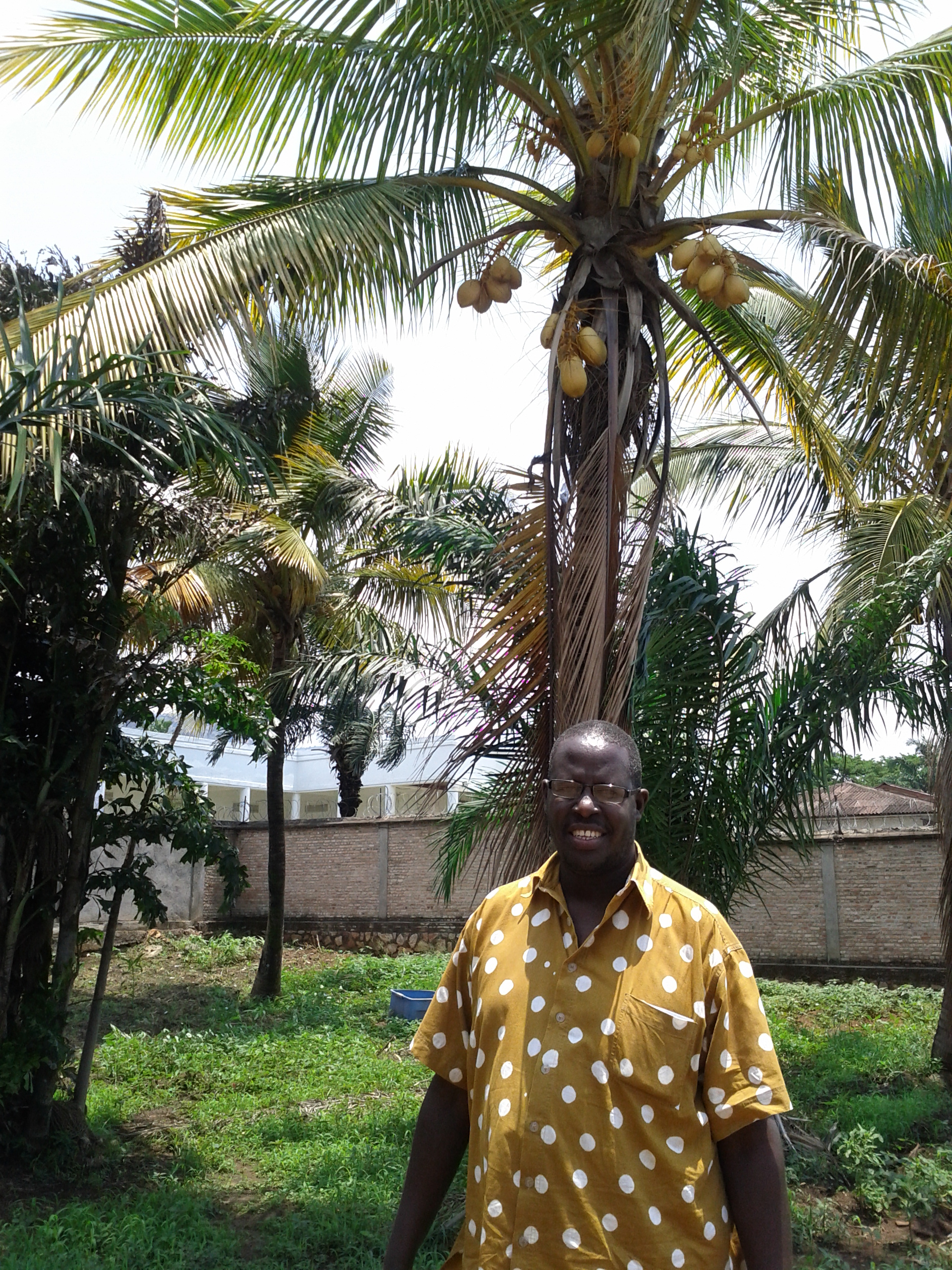During my two months in Burundi for my master field work, I took the opportunity to meet with our producing partners. The following is a conversation I had with Olivier Wege, Director General at Webcor. Olivier oversees 13 washing stations and Webcor's dry mill facility and we have bought three lots from/through them - two come from Webcor's Nemba and Masha washing stations and one from Businde washing station, which Webcor purchased from Icocoge.
Because the Collaborative is about facilitating long-term partnerships between our origin partners and roasters, I wanted to find out from Olivier what sets Webcor apart in Burundi's coffee industry; why Collaborative roasters should want to work with him and his team.
Thanks for reading,
Melanie

Olivier: [Webcor] was acquired by a Swiss company in 2008 and when they acquired this company, there was a team of three traders. Coffee traders in the trading business for more than 20 years and then right after, they entered Burundi because in 2009, there was this privatization, so Burundi was selling some of [its] coffee industries, like washing stations, dry mill factories. So Webcor arrived in Burundi in 2009 and we bought 13 washing stations and we started building our own dry mill factory in the area of Ngozi/Kayanza. We bought those three washing stations…13 washing stations and so in 2010, was the first harvest. So the first harvest but also the first time that we have private [ownership]. Directly involved at the stage of the cherries and things like that; owning a washing station – that was the first time.
Because all the private and foreign companies were waiting at the door, at the export level but this was the first time that there was a new player so far in the chain. And the first year was quite complicated because everybody had to understand the new system, how are we going to proceed and etc. So we had this whole system that used to be there with the state and then the new system… So in 2010 and 11 was a transition phase. It was quite hard for us, so we went through a lot of issues: political issues. A lot of communication problems between different partners and etc. and actually, we are still…we are now in and things are now quite calm. People now understand that the system has changed.
Now we have more private – a more private campaign, so we are really into a new area for this Burundi coffee industry. And so this is how Webcor has come into the coffee…the Burundi coffee industry but right from the beginning, we had…the way that the whole project was thought. So we have, we managed to have a good team because the idea was to really to go to this specialty coffee because we are first [in the] Ngozi/Kayanza [region] – it’s really the best area if you’re looking for the best coffee. And so our washing station[s] are from there and now when you have the right location, you have to have the right people and we managed to have the right people and have an agronomic department which is not really…it’s quite unusual in a commercial company to have an agronomic department because this is the state or…this is the state affairs but the commercial company…we chose this [model] to have control because there are many issues – the quality or the productivity of the coffee in Burundi.
So we want to make sure that the right things are met. So that’s why with our agronomic department, we can work with people like Tharcisse and Emile, with the project they are trying to put on. And that’s what we are doing: we are trying to work directly supporting the farmers. Making sure that at least the area where we are located, make sure that all the agronomic issues are followed. And then this is the only way to make sure that the productivity can grow and that we can keep on the same quality or even growing better.
And participate in some competition, like Cup of Excellence. Last year there was this Burundi Prestige Cup and then in 2012, it was the East African competition. So this is a way to show people that we are not here to just make some money, we came here to make sure that we have the quality and we make sure we keep on the quality. That’s why we are participating on these competitions and the first competition in which we participated in 2010, we had the first prize. Last year, we didn’t have a lot of coffees, so we didn’t have a very good position and this year, with the Cup of Excellence, we came back to a good position.
So this is our [mandate]: to focus on productivity and quality and make sure that we keep on this point.
Melanie: So if Webcor started working with coffee in 2008, why did they decide to enter into it from the specialty standpoint rather than just commodities?
O: We do both. Burundi…this is the strategy for Burundi. But we do both. So when they bought this trading company, they bought all the business, so the team was already buying a lot of coffee from Latin America, from Asia but few coffees from Africa. And the idea was really to strengthen the business from Africa. And on Arabica. Because this is where they felt the trend was – Arabica, fine coffee. And that’s why we came to East Africa. And then actually, we bought this entities in Burundi but we are also in Rwanda, we also in Uganda, Ethiopia but Burundi is kind of the first step. We put on, we are trying to put on business models that we are going to replicate in those countries.
M: And why did Webcor choose Burundi as the first?
O: Because the opportunity was there at the moment. Because in 2009, there was this privatization and then the [opportunity] came at that moment. So the idea was to find Arabica coffee in this trade, in East Africa and Burundi there was this privatization at this moment. So that’s why we started in Burundi but since it wasn’t so easy, because we had a strategy and the first year was to enter Burundi and then Uganda, etc. etc. And then finally, it happened that it was not so easy to enter a country and then especially when the system is changing and everything. So what we decided was to really focus on Burundi and make sure that everything is well understood and then we go step-by-step.
M: So is the agronomist that works here, is he the only agronomist? Or does he have a team?
O: He has a team. So he has three agronomic technicians. He is himself an engineer, he has three agronomic technicians. Why three? Because we have three regions. Washing stations separated in three regions. And then when necessary, we used to have…the first year, we had the…2010 and 2011, we had a team of 70 agronomic monitors. So people on the field are going around and making sure that… Finally, it wasn’t so useful, so we decided to refocus on these three technicians. And then making some partnerships with local entities.
M: Like cooperatives? Or…
O: Exactly. What we are looking for is making groups…it’s a kind of cooperative. But the name of cooperative in Burundi because in the past they had some issues, so when we say cooperative, there are sometimes…farmers, they don’t like this name. So we say groups of farmers, associations…
M: But they’re independent.
O: Independent. Exactly. So we wanted them to be independent because the thing is that people are always used to follow someone. So the problem we had is when we had those monitors, who are employees of Webcor, it was like those monitors were ruling the…then all the farmers, those groups of farmers were following this monitor like he was the one who was deciding…no, no, we wanted to be really independent and then we work together with trying to find a way to grow, to collaborate. So that’s why we…those monitors who are already people in the coffee from those areas. So we gave them independence and then so they are building those groups for some of them and then after, we’ll see a way to work together. So within the…even a visit to a washing station that’s called Butegana, because we have actually three washing stations that are the way of UTZ certification. So there’s one that’s really advanced: Butegana and now the group of farmers and everything. This is a great model to see where we are going to. So we already have this group of farmers are organized and we have this way of collaborating. We have some texts to give the partnership we are putting in place, so we are trying to build that but it’s not so easy.
But to come back to the first question you said: yes, we are focusing on…really this specialty coffee. Because this is really the added value for Burundi coffee because we are landlocked, the production is not so huge and then we have this possibility to have really good, good, good coffee. But at the same time, we are also doing coffee trading. Pure coffee trading. So we are going on volumes and everything. So that we also do it but we want to really focus on this specialty…
M: What motivates that?
O: First because it’s really, it depends really on people. Because traders we have the Webcor group. They are really for going in that way. So first you have to have the people you trust the way you choose and show us this way. That’s the first thing. Because they believe in that and then they want to go in that way. Doing volumes in Latin America and Asia, some other region in Africa but they know that for East African fine Arabica, there is this opportunity. They trust that but first… And then the second, I think, when you see how things are going. You see that there is a real opportunity. Because there are so many issues that you can overcome. So many issues because if you take Burundi in particular, you have had so many issues: political issues, the war and everything. So you know that if we work hard on things, the opportunities are there. We can really reach some… So first you have to trust that and really know that the opportunity is there and can work hard to try to find…
[gigya src="http://www.flickr.com/apps/slideshow/show.swf?v=71649" width="700" flashvars="offsite=true&lang=en-us&page_show_url=/photos/kaffa1/sets/72157631279228920/show/&page_show_back_url=/photos/kaffa1/sets/72157631279228920/&set_id=72157631279228920&jump_to=" allowFullScreen="true" ]
M: Why do you think that you’ve been successful in Cup of Excellence? What is it about the way you do things that has gotten you to the point where you’re placing very well in Prestige Cup and Cup of Excellence? What are you doing differently than the other washing stations?
O: First, again, we have the right team…
M: Where does their expertise come from? Because if you’ve only been here since 2009, that’s three years. So how do they know how to produce specialty quality coffee.
O: Those guys have been there for a long time before us. We didn’t come here and then say, “Okay, we’re going to show you how things are going to be.” No, we [were] already buying coffee in Burundi a long time ago. The traders that Webcor bought the company and this company was already buying coffee from Burundi, so it’s a long time. So they have the experience of Burundi. They knew what was the potential. So when we came here, it was not so difficult to find the right people because they were already working with some of these guys. And the team was to constitute the right team and then to constitute the right…to buy the right washing stations. Because this…we have, for certain, the best washing stations in the country. We are really good located in Burundi. So where we are, if you take Kayanza: Kayanza the region where our washing stations are, this is the region that has always been winning competitions and everything. Coffee from that region is always winning because it’s the best coffee.
M: What makes that region so special?
O: Because of the high altitude along the 1800, 1900, up to 2000 altitude. You have the good soil. Volcanic soil in that region and then you have also a discipline amongst the workers and farmers. That region, people really have the discipline to work well in their fields and everything. So I think those elements…
M: Were those SOGESTALs managed better? Is that where that comes from? This work ethic and the knowledge of how to produce high quality coffee? Because before privatization, everything was government run.
O: Exactly. Let’s say before government, there was a problem of [organization and coordination] that was really missing. And I think maybe not enough was done to make sure the productivity was well supported and everything. But on the other side, nothing was done to make sure that there is a dynamic between what you are trying to build. The end buyer. Maybe not the end buyer but one of the buyers, one of the final buyers and then the producers. There was not this dynamic. Everything was given to the state and the state was selling it. So people were not used to have feedbacks on their coffee and everything. The thing is all the coffee was kind of mixed, so if you had a good coffee from that region and average coffee from the other region, it was quite the same because finally, everything was given to the state and then the state was selling and then we were already receiving the money when there was this money and that’s it. No feedback, no exchange.
As, actually, what we got was this difference. So there is this feedback coming in and I was telling you about this quality team we have, for example. They have been working in that. In the quality of the coffee for a long time. So they have this experience but this is the first time since two years, three years that they have feedback from the buyers. From the user of this coffee. That give them knowledge to…ah, this is the kind of quality they are looking for, this is the kind of coffee they are looking for. Before that, they didn’t have anything. So it was like something linear…okay, they do what they have to do and then that’s it.
But now, since there is this dynamic, they know how they can… So actually what we do is really from the starting point, when we start…even before starting receiving the cherries at the washing station, we try actually, in the agronomic department, we try to locate some exceptional field. So when we look at those field, we start to [work] with those farmers to really make sure that they understand not only how to make sure that the field is well kept and the cherries will be fine, etc. but the way they are going to bring the cherries. When are they going to cut the cherries? How much time…they don’t have to wait long before they bring the cherries. Or putting them in different baskets and then make sure they don’t mix something they started collecting six hours before and then blending it or something.
All those small kinds of things. With that, we make sure that from the beginning, from the starting point, we have this selection. This selection is already made. And then, it comes to the washing station and then since we know we want to go to the way of having those specialty coffee, those high quality coffees, we are ready to make those selections at the washing stations. Which was not the case before. Before, coffee was…everything was thrown into the same haul and then everything is processed because it’s costing money, costing time and everything. But we have this money and we have this time. We have this time and this money because we know that we have which partners which can go and help people who are working for this kind of quality.
Because we know how to sell those kinds of coffees, we take the time and the money to select those coffees. This was not the case before and this is not the case… If you take Businde, this is a washing station which is not really far from our area and we have been helping them a lot. Because we know their coffee. We know the coffee they have, we know it’s good coffee. The thing is that because they don’t have the time or money to make sure…they blend everything. There is a big part of the coffee that is wasted. Probably not a bad coffee but good coffee…there is less good coffee. We help them to make sure that the good coffee they identify, they keep it selected from the others and we help them… We help them buy saying we are going to buy this good quality in order to select. They don’t have the time to wait until…like now. September, October, November. For getting the money. Actually, that’s a big problem. They have to go fast and have the coffee processed really fast and make sure that the coffee is ready for export early in the year so normally it can come in and then they can pay everybody.
Most of the time we lose good coffee because of the reality of the situation. I know I’m talking a lot…
M: No but it’s important because our customers don’t get to have these conversations and they really want to know these details. It’s very important to them.
O: You’ll have a lot of details when you in the field. You’ll feel more…and you’ll talk with one of our guys who’s called Luc who’s the chef de production. He’s supervising one region. We have these three [agronomists], I told you supervising these regions and supervising the washing station. He’s also coordinating certification. So you’ll have a chat with him and you can feel…and then he’s been in the coffee for more than 10 years and you can have also a chat with Felix and specially another one – the quality manager who’s coming: Lucien. And he can tell you about all this. He’s doing a lot. When he came into Webcor…well he’s a technician. Before he was only a technician. And now he can be a coffee lover. Passionate.
When we start having those cherries at the washing station, starting from March/April, he’s running all the washing stations and really at the beginning, selecting the good coffees. So sometimes he’s going all the fields just for a few kilos. So we really have to have the flexibility for a guy like him. A guy like him needs to have this flexibility to go and say, “OK, I’m going to use the car, spend money on fuel, go to the field, spend time…” He has this flexibility because we say, “OK, you go and you make sure that we have the right quality, the right fruit.”
M: The ultimate goal for us is to have those small microlots. If it’s possible to get it down to the farm level, that is our ultimate goal, so if it’s possible to eventually move towards that, then that’s very much what we want to do because we’re working with roasters that want to have relationships with specific farmers, so that they’re buying the same coffee from the same farmer year after year.
O: That we can do. We are starting because when we are building those groups of farmers, that’s really the objective. So we want to make sure that we can locate the coffee that was produced up to the field. We separate the coffees from the hills. We know this coffee is coming from hill number 1. This coffee from field number 2 and 3. So we separate from hills. What we want to do is really work from this group of farmers who themselves can say, “OK, we have this lot from this field. We have this lot from this field.” This is a job those guys will do. We cannot do everything but we have to… After that, that’s when we come back to this feedback, we say, “OK, if we can say this is the final buyer of your coffee,” and then he’s coming back because he loved your coffee, so he wants to know more about you. That’s absolutely fantastic for them because there is something coming back. Some recognition. They need also that. When they have that, somehow…
M: But it’s not only recognition… It’s about relationships [and buying from the same people year to year]. What we want ultimately is to negotiate our contracts with those farmers. Is that something that Webcor is willing to facilitate?
O: Absolutely. I think that when you start building those groups, give them all those facilities…the basic essentials…give them the tools…all this is to make sure that tomorrow they are independent and can manage themselves and can then have this direct relationship because after all, we have the washing station and dry mills and facilities. So we want to make sure that those groups of farmers, once they’re independent, once they understand that there is an opportunity of producing much more good quality, the facility is there… This is the way we’re going. We want independence for the farmers. We need more quality and more production. This is where we want to be. We are investing for that. More production and better quality. So everything that can make sure that they produce more and better quality is better. If they have this direct relationship, then they feel that they are producing for that person and that person has asked them to produce this type of coffee… this brings a dynamic that for us is fine. Because there’s no use to control everything and not making sure that things are getting better. But we want to make sure that since there is productivity, the quality is growing. That’s fine for us…
People in Burundi are really independent, they don’t like when you put them in one entity. People like to be free, independent.
M: I mean, it’s their livelihood, you can understand why.
O: But let’s make sure they really become independent in the right sense. Not independent in the sense of them failing and not knowing…not organized and knowing what to do. Really independent and know how to live off the soil…

